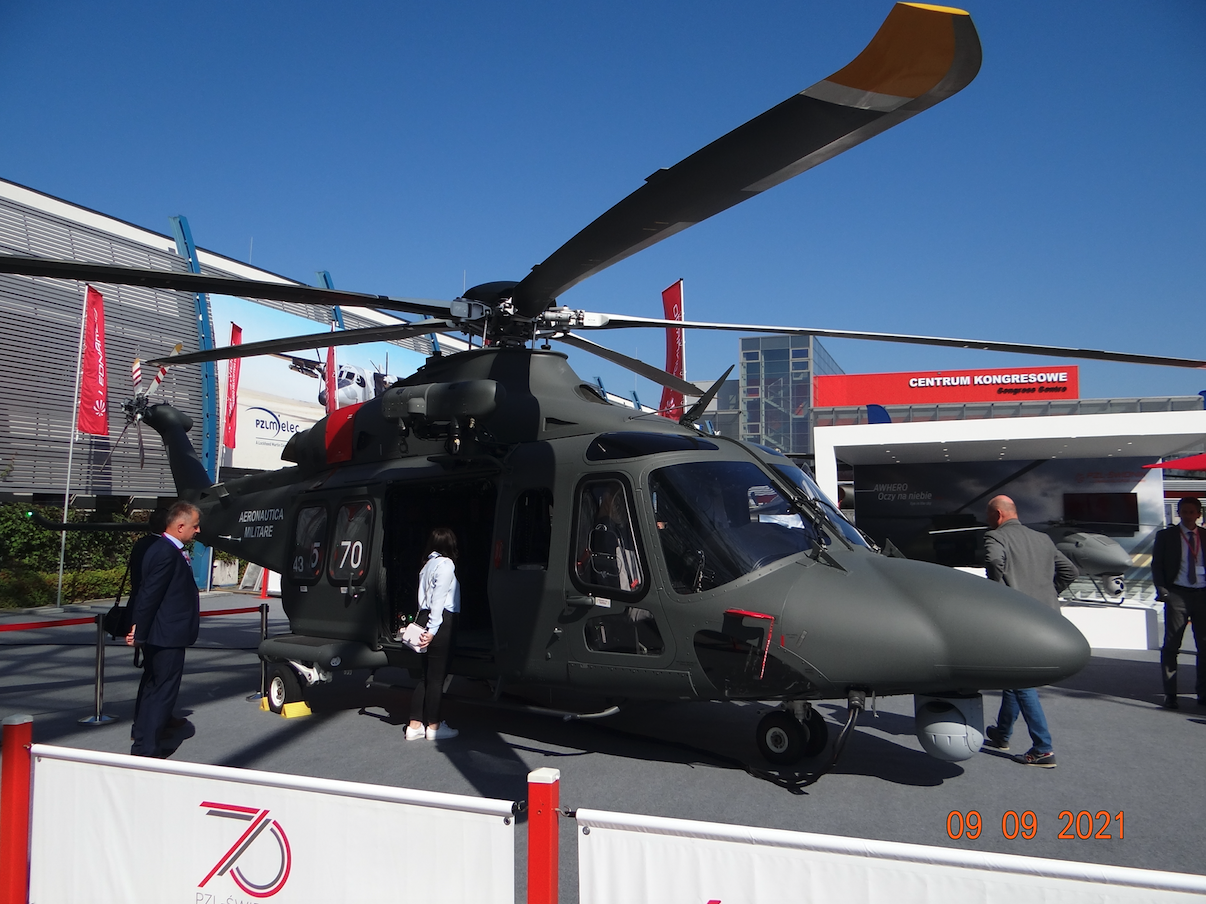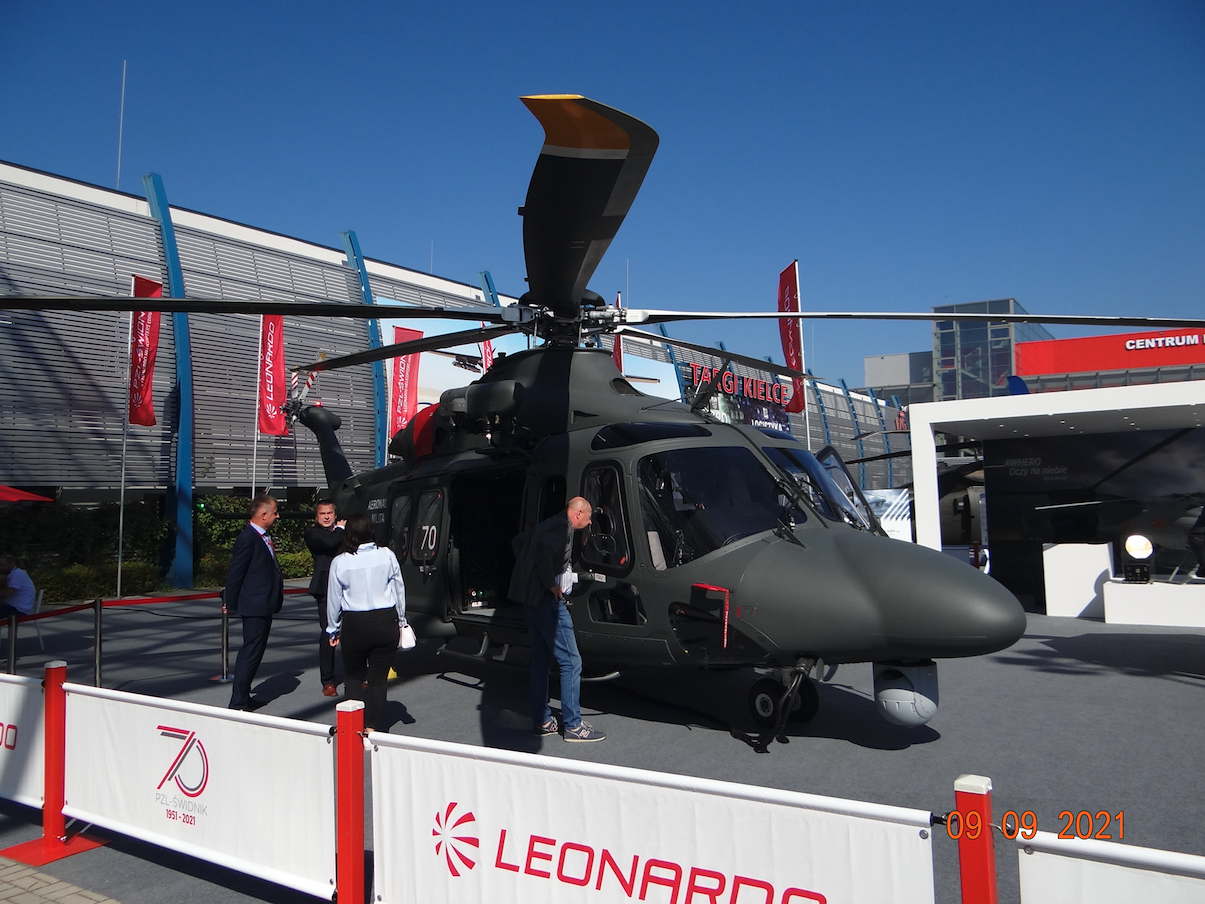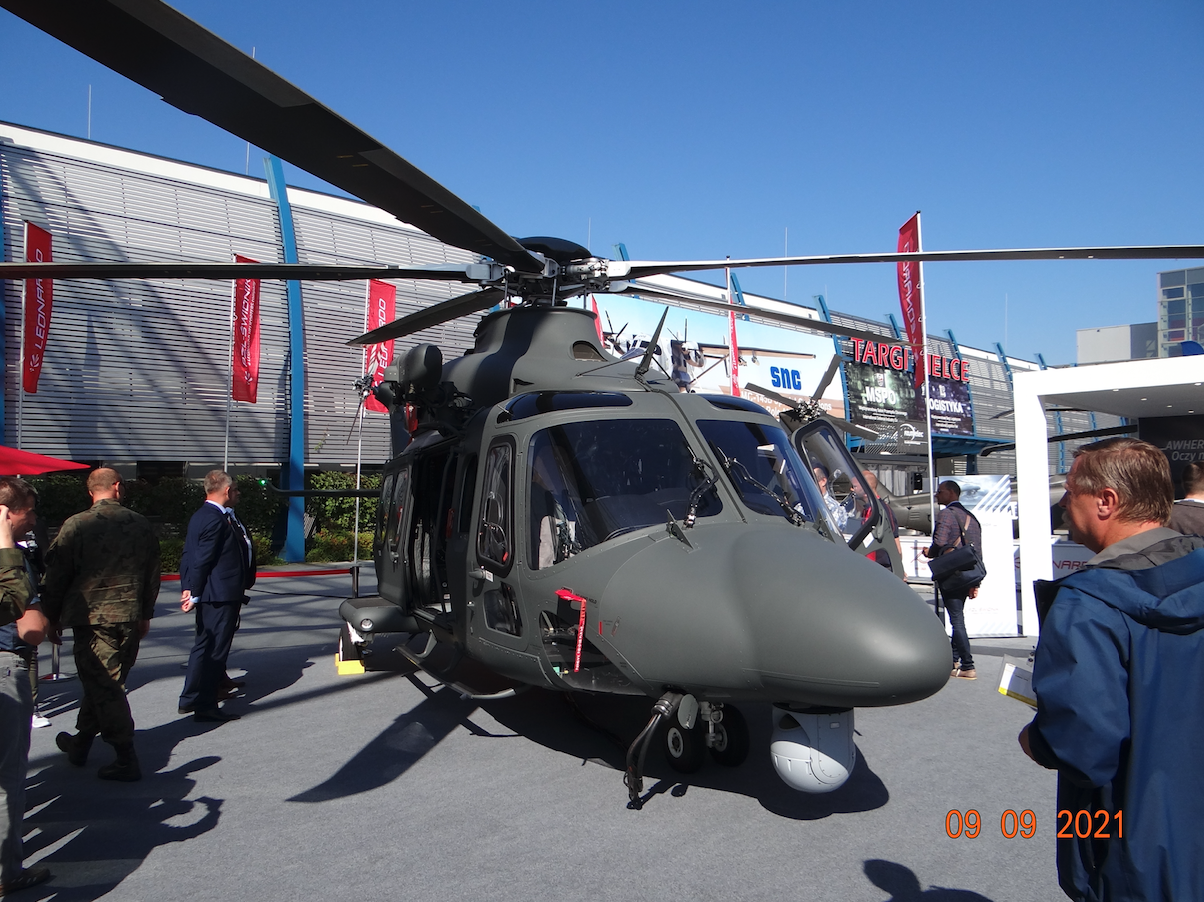Kraków 2021-09-21
PZL Świdnik Leonardo Helicopters AW.139.



Agusta company.
Agusta plants were established in 1907. It was then that the Italian constructor Giovanni Agusta founded a company producing airplanes of his own design. The Great World War disrupted the company's operations. Production was resumed in 1923. The company then adopted the new name Costruzioni Aeronautiche Agusta S.p.a. The plant was located in Samarate in Lombardy in northern Italy. The company's biggest task was the four-engine Agusta A.Z.8 plane, intended, among others, to carry 26 passengers. The plane made its first flight on June 9, 1958. Its design resembles the Douglas DC-4 aircraft. The factory has not received a single order for this aircraft.
However, already in 1952 the Agusta company purchased a license for the Bell 47 helicopter. This decision influenced the change of the production profile. Agusta and Bell collaborate in many studies and programs to date.
Agusta helicopters are traditionally marked with the letter "A" and a three-digit number. The first was the A.101 helicopter, which can take 35 passengers on board. The Agusta company also dealt with the production of turbine drives for its products. In 1961, Agusta purchased a license for another Bella product, the Bell UH-1 Huey helicopter. In 1967, a license was purchased for the production of Sikorsky SH-3 Sea King helicopters, produced in several versions. Also in 1967, a license to produce the Boeing CH-47 was purchased. In 1971, the Agusta company built its most recognizable helicopter, designated A.109. In 1983, he made the first flight of the attack helicopter with the designation Agusta A.129 Mangusta. In 1983, Agusta acquired the Italian aircraft manufacturer SIAI-Marchetti.
The cooperation between Augusta and the British Westland Helicopters company dates back to the beginning of the 80s. The first joint project was the AgustaWestland AW.101 helicopter, which replaced the Sea Kinga helicopter. Cooperation was also initiated with other companies in Western Europe. In 1992, all of these companies formed the NHIndustries consortium, in which Agusta had a stake. The result of the work was the NHI NH90 helicopter.
In 1998, the company and Bell Helicopter Textron established a joint venture known as Bell / Agusta Aerospace Company. The product of this cooperation is the vertical take-off and landing (VTOL), Bell / Agusta BA609, predecessor of the V-22.
In 2001, Agusta merged with the British Westland Helicopters and the new company AgustaWestland was established, which has approximately 20% of the global helicopter market. To date, about 20 types of helicopters have been created, designed to perform various tasks.
Polish participation in Agusta.
WSK PZL Świdnik, while looking for orders, in order not to liquidate the plant, in 1996 concluded an agreement with Agusta for the production of structural elements of Agusta A.109 helicopters (currently AgustaWestland AW.109) in Świdnik. Production of helicopter hulls and tail beams began in Świdnik. In 2006, the 500 A.109 hull was delivered from Świdnik. In 2001, the cooperation was extended to the production of the hull for the Agusta A.119 Koala model (currently AgustaWestland AW.119). Świdnik had a large share in the design and production of AgustaWestland AW.139. Since 2012, complete hulls for the AW.139 model have been manufactured in Świdnik.
Leonardo Helicopters AW.139.
Leonardo Helicopters AW.139 helicopter, formerly AgustaWestland AW.139, is a modern multi-role helicopter, designed for civilian, paramilitary and military tasks. The helicopter made its first flight on February 3, 2001. The AW.139 helicopter has been mass-produced since 2001. By 2021, more than 1,100 units had been produced.
The AW.149 helicopter is an enlarged and adapted mainly to operations in the war environment, AW.139 helicopter.
The AW.139 helicopter is a medium-sized helicopter designed for the transport of 15 people. Engineers from Italy, UK and USA (Bell) worked on the design work, therefore it was offered to the market as Agusta-Bell AB139, but after Bell withdrew from the project, its designation was changed to AW.139. The Polish PZL-Świdnik plant joined the cooperation. PZL-Świdnik produces helicopter hulls. In 2014, PZL-Świdnik delivered the 200 AW.139 airframe. The AW.139 helicopter was a commercial success.
Construction AW.139.
The AW.139 is a conventional medium helicopter powered by two turbine engines. The rotor is a 5-blade rotor. The tail rotor is 4-bladed. All blades are composite. The landing gear is triple support and is retractable in flight. The helicopter is flown by a crew of two pilots, with a maximum of 15 passengers in three rows of five seats. The customer decides about the equipment of the helicopter. The AW.139 cockpit is based on the Honeywell Primus EPIC modular avionics system, including a glass cockpit with four LCD screens. The helicopter is equipped with a four-axis autopilot, which provides a higher level of automation and safety, and allows the use of advanced features such as automatic hovering.
The AW139 is powered by two FADEC-controlled Pratt & Whitney Canada PT6C turboshaft engines, rated at 2 x 1.142 kW (2 x 1.531 hp). The FADEC system smoothly adjusts the engines to the flight conditions. The system can cope with the failure of one of the engines.
Data T-T AW.139:
Crew of 1 or 2 pilots. The cargo holds up to 15 passengers. Length 16.66 m (54 ft 8 in). Helicopter fuselage width 2.26 m (10 ft 0 in). Height 4.98 m (16 ft 4 in). Take-off weight 6,400 kg (14,110 lb) or heavy duty version 7,000 kg (15,000 lb). Fuel supply 1568 liters (414 USgal). Rotor diameter 13.80 m (45 ft 3 in). Top speed 310 km / h (193 mph, 167 kn). Cruising speed 306 km / h (191 mph, 165 kn). Range 1.061 km (659 mi, 573 nm). Flight time 5 hours 13 minutes. Rate of climb 10.9 m / s (2,140 ft / min). Operating ceiling of 6,096 m (20,000 ft).
Written by Karol Placha Hetman
